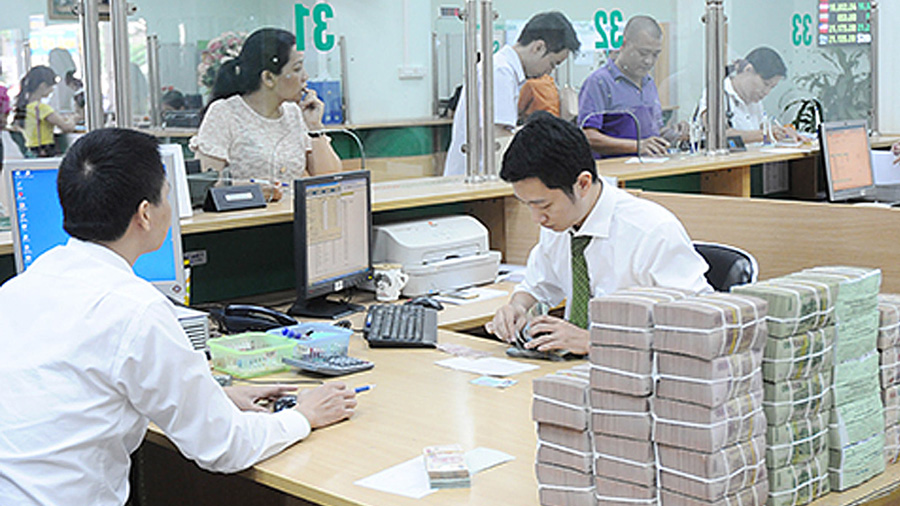HCMC – Vietnam’s State budget posted a surplus of VND28 trillion (US$1.2 billion) in October after two months in deficit, mainly driven by a sharp fall in expenditure although revenue continued to decrease.
The country saw an 18.8% year-on-year drop in total expenditure, although total revenue also fell by 9.3% as economic activity has yet to get back into full swing, according to the latest Vietnam Macro Monitoring report of the World Bank.
The year-to-date budget was also in surplus, signaling a continued contractionary fiscal policy that does not support aggregate demand during recovery.
Slow public spending was prevalent in public investment, down 25.7% year-on-year and in current expenditures, down 14.2% year-on-year. Over the January-October period, the budget registered a fiscal surplus of VND74.9 trillion (US$3.2 billion), with total expenditures contracting by 8.8%, while revenues increased by 7.6%.
Given the slow disbursement of public investment, the Government borrowed a modest VND15.6 trillion (US$0.67 billion) in the domestic market in October, raising total borrowing to VND264.4 trillion (US$14.4 billion) for the year, equivalent to 75.5% of the annual plan.
Ample liquidity continued to keep borrowing costs low, with the yield of a 10-year treasury bond in the primary market increasing slightly by three basis points to 2.15% at the end of October.
Credit growth stabilized after a brief deceleration as the economy was recovering
Credit to the economy grew by 14.2% year-on-year in October, reflecting the ongoing recovery of economic activities from the fourth outbreak, particularly in the services sectors.
Indeed, the credit growth in the services sector, which accounted for over 60% of total credit to the economy, settled at 15.6% year-on-year in October after steadily slowing from 18.3% in May.
Credit to industry and construction remained flat at about 12.7% year-on-year since July 2021, but still exceeded the pre-pandemic rates. With recovering credit demand, overnight interbank interest rates leveled off at an average of 0.65%, the same as in September, bringing the falling trend that started in July 2021 to a halt.
Trade balance posted a second month of surplus as import growth slowed
The trade surplus reached US$2.85 billion in October as merchandise exports increased by 5.7% year-on-year while import growth moderated to 6.9% from 10.2% in September. Year-to-date merchandise trade registered a slight surplus of US$160 million. The export performance reflects challenges in restarting manufacturing factories in various subsectors after a prolonged lockdown in southern Vietnam, including input and labor shortages.
By product, the export of footwear, textiles and garment, and wooden products registered a third month of decline in October 2021. The labor intensity of their production processes made it more difficult to resume total capacity quickly.
Exports of phones also fell for the first time in four months, likely due to the monthly fluctuation. Meanwhile, exports of computers and electronics, and machinery continued to grow by 8.3% and 13.1% year-on-year, respectively.
High prices continued to boost the exports of metals, which increased sharply by 74.6% year-on-year in October.
In terms of trading partners, exports to the U.S. contracted by 9.4% year-on-year in September, the sharpest drop recorded in the last five years, driven by a sharp drop in the exports of garments, footwear, and machinery to this market. It was expected to drop further by 7.0% in October, most likely driven by production constraints in Vietnam and a slowdown in the U.S. economy.
Exports to China grew by 5.9% year-on-year in September but shrank slightly by 1.9% in October.
“Vietnam is facing challenges in restarting the economy after a prolonged lockdown, but positive dynamics observed in October would suggest continued pick-up and the strengthening of growth in the coming months,” the World Bank said in the report.
Fiscal policy interventions would help, including tax relief, the acceleration of investment project implementation and social assistance to the needy.











